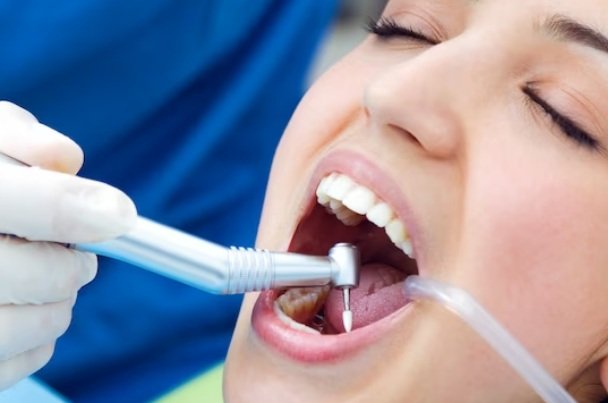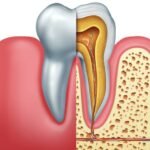Dental issues can be unsettling, and when you realize that your filling has fallen out, it can raise a lot of questions and concerns. However, not all cases of a lost filling come with immediate pain or discomfort. In this comprehensive guide, we will explore why fillings fall out, whether it’s a serious issue, the risks of leaving a filling out, prevention strategies, and what to expect when getting a new filling. We’ll also delve into the recovery process after undergoing this dental procedure.
Why did my filling fall out?
Fillings are dental restorations used to repair teeth damaged by decay or trauma. They are typically made of materials like amalgam, composite resin, or gold. Over time, various factors can lead to fillings falling out, including:
- Tooth decay: One of the most common reasons for a filling falling out is recurrent decay around the edges of the filling. This can weaken the bond between the filling material and the tooth.
- Wear and tear: Everyday activities like chewing and grinding can put a lot of pressure on your fillings. Over time, this constant stress can cause the filling to break or dislodge.
- Poor fit: If the filling was not properly fitted or bonded to the tooth during the initial placement, it is more likely to come loose.
- Eating hard or sticky foods: Biting into hard objects or chewing sticky candies can put extra stress on your fillings, making them more prone to dislodgment.
- Age: Fillings, like all dental work, have a lifespan. Depending on the material used, they may deteriorate or wear out over time, leading to a loss of integrity.
- Temperature changes: Extreme temperature variations, such as consuming hot and cold foods or beverages in rapid succession, can cause fillings to expand and contract, potentially leading to their dislodgment.
Is it serious if my filling fell out?
The seriousness of a fallen filling depends on several factors:
- Pain or discomfort: If your filling fell out but you are not experiencing any pain or discomfort, it might not be an immediate emergency. However, it still requires prompt attention from a dentist.
- Exposed tooth: When a filling comes out, it leaves the affected tooth exposed. This can make the tooth more vulnerable to further damage and decay.
- Underlying issues: A lost filling may indicate underlying problems, such as recurrent decay or a poorly fitting filling, which need to be addressed promptly to prevent complications.
- Aesthetics: If the lost filling is in a visible area, it can affect your smile’s appearance.
While a lost filling may not always be an emergency, it is crucial to seek dental care as soon as possible to assess the situation and determine the appropriate course of action.
What are the risks of leaving a filling out?
Leaving a filling out can pose several risks to your oral health:
- Increased sensitivity: The exposed tooth may become sensitive to hot or cold temperatures, sweet foods, or pressure, leading to discomfort.
- Further decay: The gap left by the missing filling can trap food particles and bacteria, promoting the development of new cavities.
- Weakened tooth structure: Over time, an untreated tooth with a missing filling can become weaker and more prone to fractures or additional damage.
- Pain and infection: If decay has reached the inner pulp of the tooth, it can lead to pain and infection. This may necessitate more extensive dental treatments, such as root canal therapy.
- Aesthetic concerns: If the lost filling is in a visible area, it can affect your smile’s appearance, leading to self-esteem issues.
How to prevent your fillings from falling out
Preventing fillings from falling out is essential for maintaining your oral health and avoiding unnecessary dental procedures. Here are some tips to help you prevent this issue:
- Regular dental check-ups: Visit your dentist for regular check-ups and cleanings. This allows them to monitor the condition of your fillings and detect any potential problems early.
- Good oral hygiene: Brush your teeth at least twice a day and floss daily to remove plaque and food particles that can contribute to decay around fillings.
- Avoid hard and sticky foods: Be cautious when eating hard or sticky foods, as they can put extra stress on your fillings.
- Wear a mouthguard: If you grind your teeth at night, consider wearing a custom-made dental mouthguard to protect your fillings from excessive pressure.
- Choose the right filling material: Work with your dentist to choose a filling material that is appropriate for your specific dental needs and lifestyle.
- Address any discomfort promptly: If you experience pain, discomfort, or notice anything unusual with your fillings, consult your dentist immediately.
- Avoid extreme temperature changes: Try not to consume extremely hot and cold foods or drinks in quick succession, as this can stress your fillings.
How to replace a filling that has fallen out
If your filling has fallen out, follow these steps to address the situation:
- Contact your dentist: Schedule an appointment with your dentist as soon as possible. Explain the situation, including any symptoms or discomfort you may be experiencing.
- Protect the tooth: In the meantime, you can protect the exposed tooth by avoiding hot or cold foods and drinks and being mindful while chewing.
- Avoid home remedies: Do not attempt to replace the filling yourself using over-the-counter dental materials, as this can lead to complications and infection.
- Temporary filling: If the dentist cannot see you immediately, they may recommend using a temporary filling material available at pharmacies to cover the exposed area and protect the tooth.
What to expect when getting a new filling
Getting a new filling is a common dental procedure, and it typically involves the following steps:
- Assessment: Your dentist will examine the tooth to assess the extent of damage or decay. X-rays may be taken to get a more detailed view.
- Anesthesia: If necessary, your dentist will administer local anesthesia to numb the area around the tooth, ensuring you don’t feel pain during the procedure.
- Removal of decay: The dentist will remove any decayed or damaged tooth structure, as well as the old filling material if it’s still present.
- Preparation: The tooth is prepared for the new filling by cleaning and disinfecting the cavity.
- Filling placement: The dentist will place the new filling material into the prepared cavity, shaping and bonding it to the tooth.
- Bite check: After placing the filling, your dentist will check your bite to ensure it aligns properly with the opposing teeth. Adjustments may be made if necessary.
- Polishing: The filling is polished to ensure it’s smooth and fits comfortably within your bite.
- Final assessment: Your dentist will perform a final check to ensure the filling is secure and your bite is properly aligned.
Recovery After Getting a New Filling:
Once the procedure is complete, you can expect a relatively smooth recovery process. Here’s what you need to know:
1. Sensitivity
It’s common to experience some sensitivity to hot or cold temperatures after receiving a new filling. This sensitivity usually fades within a few days to a week. Over-the-counter pain relievers can help manage any discomfort during this period.
2. Avoid Chewing on Hard Foods
To prevent damage to the new filling and give it time to fully bond with your tooth, avoid chewing on hard or crunchy foods immediately after the procedure. Stick to softer foods for a few days.
3. Maintain Good Oral Hygiene
Continue your regular oral hygiene routine, including brushing and flossing, but be gentle around the filled tooth. Proper oral hygiene is crucial for preventing future decay and maintaining the integrity of the filling.
4. Follow-Up Appointments
Your dentist may schedule a follow-up appointment to check the status of your new filling and address any concerns. It’s essential to attend these appointments as recommended to ensure the filling’s long-term success.
5. Monitor for Issues
Pay attention to any unusual sensations or changes in your filled tooth. If you notice persistent pain, discomfort, or signs of damage, contact your dentist promptly. These could be indications of complications that require attention.
6. Dietary Considerations
While you can typically resume your regular diet after getting a new filling, it’s advisable to avoid excessive consumption of sugary or sticky foods, as they can contribute to tooth decay.
In conclusion, getting a new filling is a straightforward dental procedure designed to restore your tooth’s health and function. With the right care and attention to your oral hygiene, you can expect a smooth recovery process and enjoy the benefits of a restored and healthy tooth. If you have any concerns or questions about your new filling, don’t hesitate to reach out to your dentist for guidance and reassurance.












